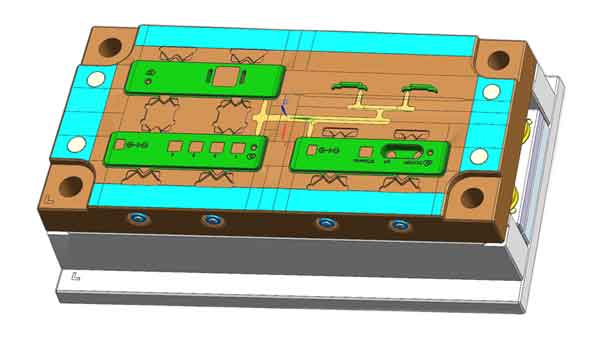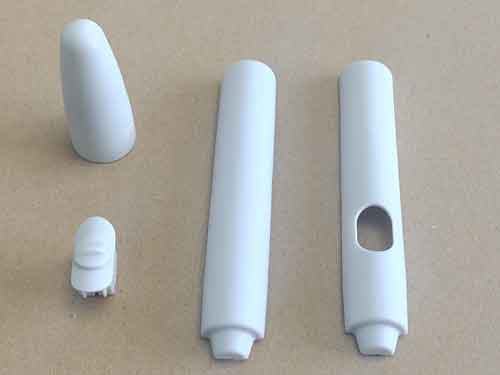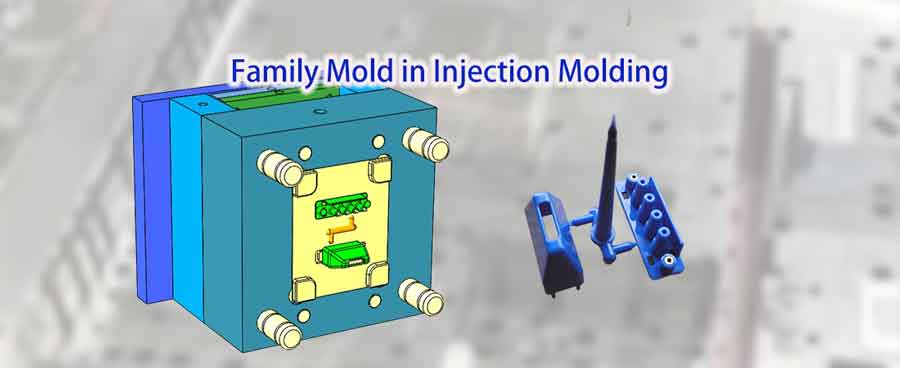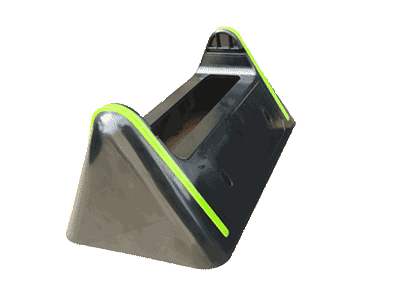Understanding Family Molds in Injection Molding
Family molds in injection molding are a unique type of mold that allows for different parts to be placed and molded within the same tool. Essentially, cavities for various parts are created within a single mold, enabling the simultaneous manufacturing of multiple components in one injection molding cycle. This method is primarily employed to reduce the number of molds required, thereby lowering overall costs.
Advantages of Using Family Molds in Injection Molding
Family molds in injection molding can be an efficient tool if used correctly. They integrate the production of multiple different parts within a single mold, offering several advantages. Here are the key benefits of using family molds:
1. Cost Savings in Mold Expenses: Placing different parts in the same mold significantly reduces the number of molds required. Each independent mold typically needs its own mold base and accessories, but using a family mold can save approximately 20-60% of these costs.
This is particularly true for parts requiring side gates, where a single-cavity mold might necessitate a longer runner, increasing costs. A 1+1 cavity family mold can shorten the runner, effectively cutting expenses.
Moreover, when several parts have similar shapes and sizes, like buttons on a car key, producing them with a family mold can lead to substantial cost savings.


2. Ideal for Small Batch Production: For small-scale production, family molds reduce the need for frequent mold changes and adjustments, saving time and costs. This makes them an ideal choice for small-scale or prototype production.
3. Reduced Robotic Arm Costs: In production lines where robotic arms are used for part removal, employing a family mold means only one set of robotic arms is needed. This not only reduces the costs of repeated design and manufacturing but also simplifies the production process.
Even if some products require two or more family molds, using two sets of robotic arms, as opposed to designing a set for each individual mold, still saves on design and maintenance costs.
In summary, family molds offer a cost-effective and adaptable production solution, especially suitable for projects requiring the production of diverse parts. By reducing the number of molds, simplifying the production process, and lowering robotic arm costs, they effectively optimize production efficiency and cost control.
Limitations and Conditions for Using Family Molds
While family molds in injection molding offer some advantages, their use is subject to specific conditions and limitations. It is not a matter of arbitrarily placing different parts within a mold as one might freely choose dishes in a restaurant.
In reality, the use of family molds must adhere to a set of stringent conditions. These conditions are essential for ensuring a smooth production process and guaranteeing the quality of the final products. Understanding and complying with these limitations is crucial for effectively utilizing family molds in production.
The Need for Similarity in Products within Family Molds
When producing parts using family molds in injection molding, special attention must be paid to the similarity in shape, size, and wall thickness of the parts.
Impact on Product Quality:
During the injection molding process, the speed, pressure, and temperature of injection molding can affect the dimensions and surface quality of the products. Each product has an optimal injection molding condition window, including an ideal and an acceptable range. However, for products with varying sizes and wall thicknesses, these condition windows might differ significantly, sometimes without any overlap. This means they may not be suitable for production in the same family mold. Family molds might not be applicable in situations where:
- a. Extremely high precision in product dimensions is required.
- b. Injection molding defects are likely to occur, such as in transparent parts or products where surface flaws are a concern.
Impact on Injection Molds:
Molds in the injection molding process need to withstand significant pressure. If there’s a considerable size difference among products in a family mold, the mold may be subjected to uneven eccentric forces. If these imbalanced forces act repeatedly, they could shorten the lifespan of the mold.
In conclusion, although family molds in injection molding provide efficiency and cost-saving advantages in the manufacturing process, the consistency in size, shape, and wall thickness of the products must be considered. If these factors vary too greatly, it could affect the quality of the products and the durability of the mold. Therefore, when opting for family molds, these factors must be carefully evaluated to ensure a smooth production process and the quality of the final products.

Additional Limitations in Using Family Molds
In addition to considering the size and shape consistency of products, there are other limitations when using family molds in injection molding:
Material and Color Consistency: All parts produced in the same family mold must use identical materials and colors. This requirement arises because all parts are produced simultaneously in a single injection molding cycle, making it impossible to use different materials or colors for each part.
Matching Cavity Numbers with Part Requirements: The number of cavities for each part in the mold (i.e., the number of parts produced per injection cycle) must match the quantity needed in the final product assembly. For example, if a product assembly requires 2 A parts, 1 B part, and 3 C parts, then the ratio of cavities for A, B, and C parts in the family mold should also be 2:1:3.
Easing Family Mold Constraints During Prototyping
During the prototyping phase, these two conditions can be relaxed:
- In the prototyping stage, it may be acceptable to discard some surplus parts. Although this leads to some material waste, it is more tolerable compared to the savings in mold costs.
- Another approach is to block some of the runners, preventing the production of parts at these blocked points during the injection process. Typically, this is done using copper brazing, which can be removed later if needed. This method effectively reduces material waste (by not producing unnecessary parts) and is generally used in scenarios where a slightly larger quantity of parts is produced.
An Example of a 4x4 Family Mold
This is a successful application of a 4×4 family mold. The product consists of four different parts, with each part having four cavities. This means that each injection molding cycle can produce 4×4=16 plastic parts.

The material used for these products is light-colored ABS, known for its tolerance to appearance defects, thus offering a wider window for injection molding conditions, which is highly beneficial for using family molds.
Despite the differences in the size of these four products, especially the buttons being much smaller than the other components, their wall thicknesses are quite similar. Notably, this mold has been operated over 150,000 shots with virtually no issues.
As seen in the video, these products are extracted by suction cups on robotic arms and then dropped into their respective containers. This setup allows for continuous production without the need to change molds, significantly saving on labor costs. Regular checks on product quality and machine operation are all that’s needed. This example vividly demonstrates the efficiency and cost-saving advantages of using family molds.
Conclusion
In summary, while family molds offer a lot of conveniences in production, they also have specific limitations. Understanding these limitations is crucial for better planning the production process, ensuring efficiency, and maintaining quality. During the prototyping stage, these restrictions can be appropriately relaxed to save costs and time.

